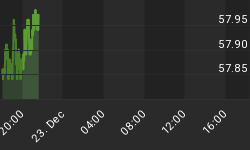Below is an extract from a commentary originally posted at www.speculative-investor.com on 3rd January 2008.
The elephant under the rug
It is remarkable that even the best financial-market analysts are managing to analyse the on-going debt crisis whilst avoiding any mention of the crisis' root cause. The ultimate blame for the crisis lies at the feet of the central banking community and the inherently unsound monetary system it foists on us, and yet almost all the attention is being directed towards the parts played by private-sector debt creators and financial intermediaries. If the central banks get mentioned at all it is usually only in the context of their collective ability to come to the rescue. That is, while analysts often discuss the abilities of the central banks to make things better by "re-liquefying" the financial markets, they generally ignore the critical role played by central banks in fostering the giant credit-creation spree that inevitably led to the current predicament.
Many private banks and other financial intermediaries attempted to conjure enormous short-term profits out of thin air by expanding the supply of credit in ways that made no economic sense from a longer-term perspective. These institutions and individuals deserve to suffer huge losses and to be publicly ridiculed for their actions, but when apportioning blame it is important to recognise that the architects and pushers of structured finance were only responding to stimuli generated by central banks and made possible by the fraudulent nature of the monetary system. What we have here isn't capitalism run amok; it's the natural consequence of official (government and central bank) manipulation of prices combined with a monetary system that sets no objective limits on the money supply. It is, in effect, the OPPOSITE of capitalism.
The price being manipulated in this case is the price of credit. By fixing the price of short-term credit at an artificially low level over a prolonged period and providing an implicit guarantee that no private bank will ever run short of money, the central bank creates the conditions under which a credit glut is sure to occur. Holding the price of credit at an artificially low level increases demand, and unlike the producers of commodities such as soybeans and copper the main producers of credit have the ability to profitably grow their businesses by ramping-up supply in response to every increase in demand spurred by a falling price.
We emphasise that the widespread under-pricing of credit facilitated by the central bank does not happen by accident or mistake; it happens by design. The ONLY reason for the central bank's existence is to perpetuate inflation and one of the most effective ways to perpetuate inflation is to hold the price of credit at an artificially low level. This is important: the CORRECT price of credit is the price that would prevail in the ABSENCE of the central bank.
To sum up, throughout the debt crisis that began when problems in the US sub-prime mortgage market first bubbled to the surface the central bank has been the proverbial "elephant hiding under the rug". But while the central bank's culpability should be obvious to all, hardly anyone acknowledges it.
Market Stabilisers
In an article published about three weeks ago at http://www.investorsinsight.com/otb_va.aspx?EditionID=628, Stratfor.com's George Friedman argues that China and the countries of the Arabian Peninsula act as financial-market stabilisers because they recycle, into the world's equity and bond markets, the huge quantity of dollars that flows their way due to the high price of oil (in the case of the Arabian Peninsula) or the low cost of manufacturing (in China's case). But while Mr. Friedman's argument is correct on a superficial level, it's akin to saying that central banks act as market stabilisers when they sponsor more inflation in an effort to paper over the problems caused by earlier central-bank-sponsored inflation.
The huge quantity of money being recycled by the oil-producing nations and by China is, first and foremost, a symptom of the problem, not a stabilising force. Way too much money has been created over the past ten years and a significant chunk of this new money has ended up with the producers of scarce resources. From a short-term perspective it could be considered fortunate that the recipients of the money have turned around and sent it back from whence it came via investments in stocks and bonds, thus preventing some of the bad effects normally associated with high inflation from coming to the surface up until now. However, the fact that some of the traditional effects of rampant money-supply growth -- large increases in bond yields, for example -- were prevented from happening allowed the credit bubble to expand at a much faster pace than would otherwise have been possible. In other words, the so-called "stabilising force" helped foment a bigger bubble and set the stage for the current debt crisis.
















